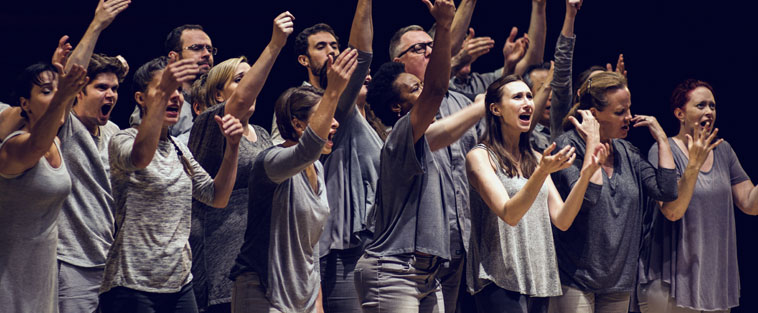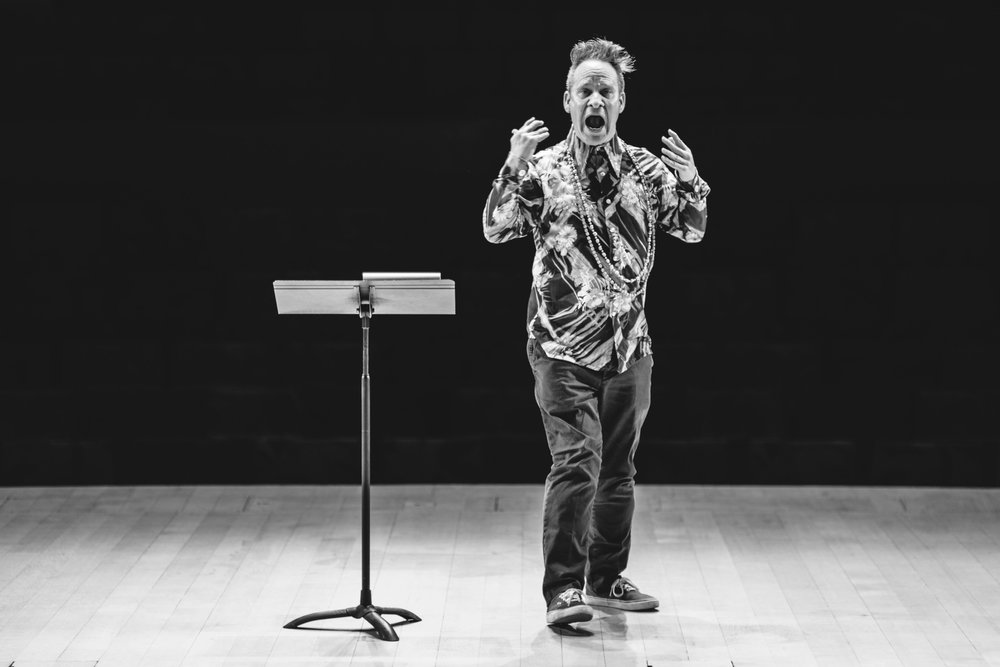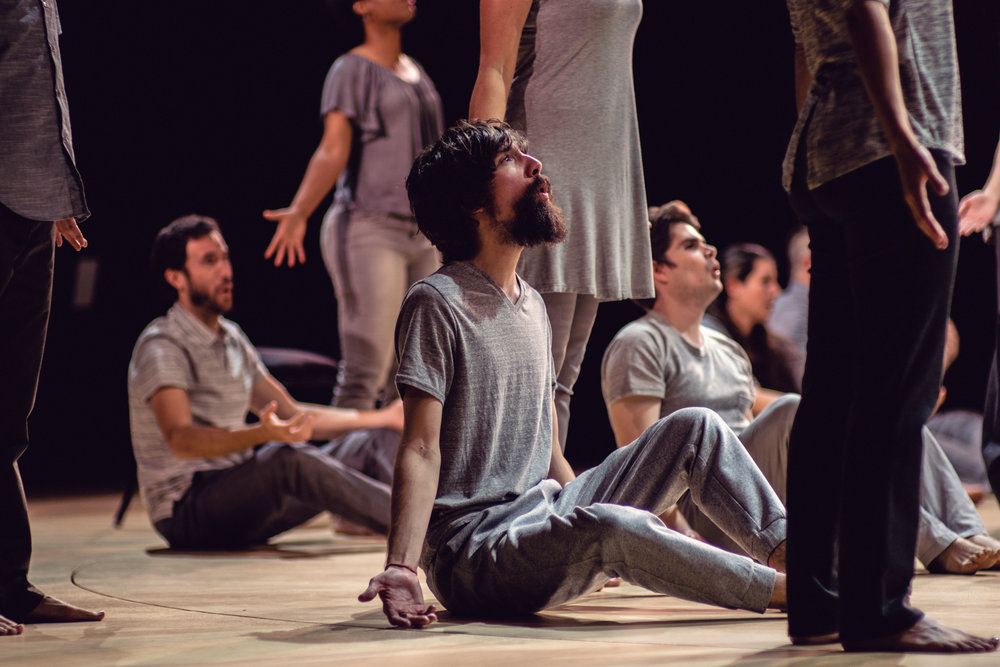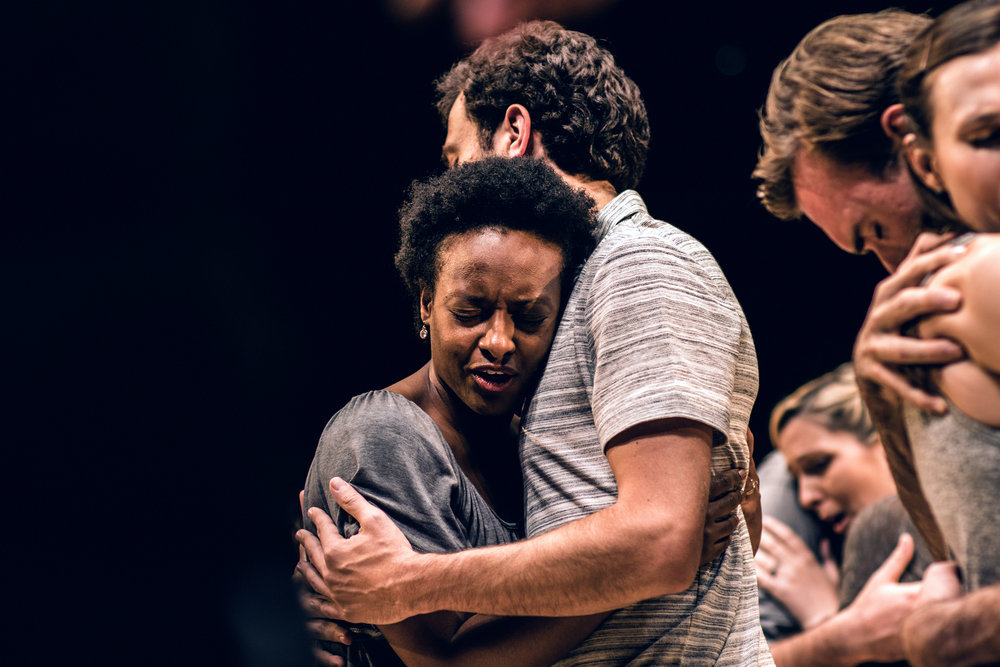
By Dennis Polkow
Neither director Peter Sellars nor conductor and Los Angeles Master Chorale artistic director Grant Gershon might have come to know the music of Renaissance master Orlando di Lasso were it not for one of the most celebrated composers today, their mutual friend John Adams.
“John was looking for a texture for The Gospel According to the Other Mary,” explains Sellars, “and he was going through medieval music and Renaissance music kind of like Igor Stravinsky, looking for music where there’s a very detailed and elaborate harmonic language. John came across Lasso and became so excited. He told both Grant and me to look at Orlando de Lasso.”
Sellars and Gershon had collaborated with Adams on a number of his works, including The Gospel According to the Other Mary, which Gershon and the Los Angeles Master Chorale brought to Ravinia in 2013. Adams would go “in another direction for The Other Mary,” as Sellars puts it, but the recommendation stayed with Gershon, who began poring through pieces by Lasso, seeking repertoire for the Master Chorale, and came upon Lagrime di San Pietro—The Tears of Saint Peter. Sellars and Gershon’s ultimate, wholly unique conception of the work comes to Ravinia on September 13, [and both masterminds will join Ravinia President and CEO Welz Kauffman on the Pavilion stage for a further discussion of its genesis immediately before the performance].

“It is to the Italian Renaissance what Bach’s B-minor Mass is to the Baroque period,” assesses Gershon. “It’s an incredibly towering masterpiece and is a summing up of everything that this great composer had learned and experienced over his long lifetime. He knew it was the last thing that he was going to write. He was virtually on his deathbed as he finished it. It’s interesting because again, similar to Bach and the B-minor Mass, he took incredible pains to make sure that the piece would be engraved in the most elaborate fashion for posterity. And yet it’s hard to imagine that he actually thought himself that this piece would ever be performed. It’s not a liturgical piece.
“I was aware there was a disconnect between the recordings that I knew of; very beautiful recordings of Lagrime, but they tend to have a sameness to them. It felt like they were treating the material from a distance and only concerned with the purity of that Renaissance vocal tradition. Whereas I thought immediately that these are madrigals, which, of course, are the precursor to opera. Within 15 years of the completion of this piece, Monteverdi would be transforming that madrigal. Actually, if you look at the piece in those terms, there’s so much color and drama and sense of anguish and spiritual light that then takes over just from phrase to phrase. The key to unlocking this piece is to really look at the poetry in a very, very deep way and think very clearly about how a true reading of the poetry would really change the way that one approaches the music.”
When Gershon and Sellars were working together on a Vivaldi opera at Santa Fe Opera in the summer of 2011, Gershon told Sellars, “‘You have to get into the Lagrime di San Pietro,’ ” Sellar recalls, “the summa, the final work, of Lasso. It is kind of this compendium of Renaissance polyphony to the max. It’s the most accomplished and fully realized and beautifully polished work.”

“I knew that Peter was doing a deep dive into the Bach passions at the time,” explains Gershon. “He had just staged the Saint Matthew Passion for the Berlin Philharmonic and was about to embark on the Saint John. I knew that Peter works with choruses in a very deep and very specific way. But I also knew that he had never attempted a completely a cappella work before. So I brought up Lagrime,and though Peter was quite familiar with a lot of the music of Orlando di Lasso, including some of the penitential pieces and songs, but he didn’t know this particular piece.”
“I investigated it, and then Grant called and challenged me: ‘Okay, Peter, you have to stage the Lagrime di San Pietro.’—‘No, I don’t!’ ” recalls Sellars, giggling at his initial defiance. “It is the hardest music; it truly makes Ligeti seem like something you have for breakfast. The vocal writing is so stunningly detailed, but the way the chords are formed is so intricate. And then the idea of actually staging it—well, nobody has ever, ever tried to memorize an hour and twenty minutes of Renaissance polyphony. It doesn’t happen. In the early-music groups that undertake this stuff, there are scores and singers standing up and looking straight ahead into their scores. And so the idea of getting to know this music by heart is—you know, from any music, as soon as you memorize it, you have a completely different grasp of it. It’s completely different from just reading it in a performance.”
“I remember Peter saying that if we were to actually undertake this project,” says Gershon, “it will be the hardest thing that either one of us will have ever done. I thought it was hyperbole at the time, but it turned it to be true. Over the course of the next three years, we were working on other projects and would periodically come back to this idea of staging Lagrime. One of the things that we thought about from the beginning was that the staging itself should be very simple and austere: no sets, no props, the performers in street clothes—really let the music and the singing movement speak for the piece. I think that was a very wise decision. It leaves it to the audience to focus purely on the singers singing, and then there’s no barrier between the audience and the emotional and the spiritual content of the piece.
“In pretty much all of Peter’s work, movement is key to the text. What I love about Peter’s contrapuntal work like this is that because the movements are key to words and phrases, as they reach different points in the musical polyphony, we actually see musical embodiment. Each group of three singers on each individual part is in unison yet in counterpoint to all of the other movements, or boosted in three groups. Sometimes it’s two and five, sometimes each going in its own pace as the music does. It’s a great way for an audience to have a visual key to the musical counterpoint.”

“What I was able to do working closely with Grant,” Sellars adds, “is create a kind of sculptural sound. In a standard concert of Renaissance polyphony, everyone is facing the same way. What you can do as soon as you start turning people in space is—the voices are in motion, and the whole space comes alive with these harmonic convergences and dissonances and surprising shifts of color and emotion. To really hear that as a moving, living experience is quite incredible. And we’re able to prepare a kind of tonal shift with physical shifts of orientation. That is quite amazing.
“As soon as you start asking what are the pictures Orlando is working with—and like Bach, he was a completely pictorial composer—you realize this music is actually painting pictures. And you can make those pictures with the human beings on stage. It’s an astounding experience. Music that could be heard as kind of wallpaper, which is how most of the existing recordings sound—they are perfectly nice, but not that gripping. But if you have an actual vivid sense of what the imagery is, then also musically you suddenly have a set of amazing choices that have not been made before. It’s kind of a breakthrough.”
The breakthrough is not only musical, as Sellars sees it, but spiritual.
“To grotesquely simplify,” explains Sellars, “the two great composers of the Renaissance are Palestrina and Lasso. Palestrina is the music of perfection. It’s everything’s in place, gleaming, shining, heavenly. Whereas Orlando di Lasso is totally addicted to drugs. He’s a mess. He’s a wreck. He’s a ruin. He’s kind of a Bob Dylan figure of the Renaissance. A total mess, yet, at the same time, sacred. It’s the contrite and broken, shattered spirit whom God is fond of, and that’s what this piece is about. Lasso’s music has this truly messed-up sound of somebody who’s made wrong choices. And for the shocking, broken harmonies and these painful, painful chords which you can feel the shame and self-hatred burning through these chords, you can feel the sense of, ‘I was wrong. I did the wrong thing, and I still am doing the wrong thing. And I don’t know how to stop.’

“That kind of pain and hurt and damage is inside this deep musical language: the idea that Peter made a big mistake. When the cops came to arrest Jesus, they said, ‘Do you know this guy?’ and Peter said, ‘No,’ and Jesus looked at Peter. And then the cops took him away. These 21 madrigals are about what is in that one look—when Jesus just looked at Peter and then was taken away. And Peter saw that look the rest of his life. Of course, it’s classic synesthesia, all the senses overlapping. Music is there to give you the sense of touch, the sense of smell. In the very first number, Peter sees all the police, all these swords and spears: ‘I don’t want you to pierce me. And so I’m going to escape.’ Of course, what he doesn’t realize is that the arrows of Jesus’s gaze will pierce him the rest of his life.
“And yet, what lets you know that Orlando is one of the greatest composers who ever lived is that like Bach, or even like Mahler for that matter, this music of great despair has this incredible light shining through it. So it’s not just a kind of minor seventh chord from Verdi. It’s not just crisis. It’s that this crisis is actually getting closer to God. And it’s not until you’re in the middle of a crisis that you’re going to be ready to receive spiritual illumination. And because spiritual illumination is not for the comfortable and the satisfied, it’s for the people who are in agony in this world and are searching and searching for something else; this is music of crisis and despair that is fused with light and transcendence and beauty. You get that this crisis is one step away from salvation. And that is the mark of a great composer, when the music of crisis is also exultant, not simply devastating.” ▪
Veteran award-winning journalist and critic Dennis Polkow is a columnist for Newcity Chicago and a Chicago correspondent for London-based Seen and Heard International.
